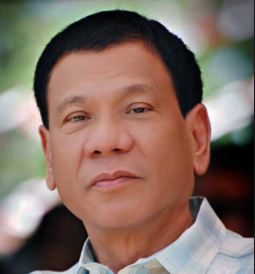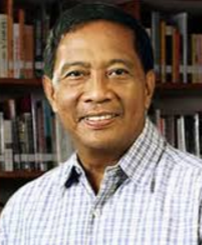Part of an #Election2016 series called “Public Choice”
HUNGRY MOUTHS TO FEED
The Philippines has a growing population of 102 million as of 2016, which is expected to rise to 148 million by 2050. It faces the challenge of meeting its food security needs for the foreseeable future. According to the International Food Policy Research Institute (IFPRI), the Philippines ranked 53rd out of 104 countries in 2015 in terms of managing hunger, based on its Global Hunger Index, which looks at food supply, child undernourishment, and child mortality.
While other ASEAN neighbors such as Malaysia, Thailand, and Vietnam have made great strides in lowering hunger to “moderate” levels over the course of the last quarter century, the situation in the Philippines and Indonesia is still classified as “serious” by IFPRI, although the Philippines is on the cusp of lowering hunger to moderate levels (see featured chart above).
The causes of hunger are manifold. The Kidapawan protests in North Cotabato highlight the vulnerability of rural farming communities, most especially those near conflict areas, to suffer from hunger. According to the World Food Program, poverty, lack of investment in agriculture, war and displacement, climate change and weather, unstable markets and food wastage all play a role in causing hunger.
According to the Food and Agriculture Organization of the United Nations (FAO), the Philippines did manage to lower the prevalence of undernourishment by half. Between 1990-92 and 2014-16, undernourishment went down from 26.3% to 13.5% of the population. The number of undernourished Filipinos also went down from 16.7 million to 13.7 million during this time.
According to UNICEF, child stunting in the Philippines was still high at 30.3% in 2012-13, although this is down from 43.3% in 1989-90. Stunting among children under five is more prevalent in rural areas at 35% compared to 26% for urban dwellers, and it is much higher among the poorest families at 45% compared to the wealthiest at 13%.
Stunting not only affects physical growth but cognitive development, and is irreversible. This leads to lifelong disadvantage for those that suffer from it, as future schooling, employment and income prospects may be affected. To make Philippine society more inclusive in the years ahead would require improving the nutritional intake of disadvantaged households. Only then would we reap the “demographic dividend” as a greater proportion of Filipinos enters the workforce.
WHAT DOES FOOD SECURITY MEAN?
From the World Health Organization (WHO) comes the following definition of food security:
when all people at all times have access to sufficient, safe, nutritious food to maintain a healthy and active life.
Providing food security means addressing the following factors:
- Availability or having an adequate supply of food. This is done by increasing the yield or output of our farms, drought-proofing our farming techniques, improving post-harvest handling, transport and storage capacity, and meeting supply gaps by importing food from overseas.
- Accessibility or having the means to meet daily dietary needs, through work and/or income support, and by building better infrastructure (i.e. farm-to-market roads and ports) to reduce the cost of transporting goods, giving consumers access to adequate, quality food.
- Utilization or being able to “ingest and metabolize food through adequate diet, clean water, good sanitation and health care to reach a state of nutritional well-being where all physiological needs are met.” Overweight and undernourished is a growing phenomenon in poor countries that needs to be addressed.
WHAT THE CANDIDATES ARE PROPOSING
Now that we have seen the importance of food security, let us turn to the candidates and weigh up their policy proposals. The policies cited here were taken from the Inquirer’s election series, Agenda for the Next President page on food security.
 Mar Roxas
Mar Roxas
The former interior secretary is credited with keeping raw sugar VAT exempt. Increased sugar intake is responsible for causing a rising proportion of Filipinos being overweight, which in turn makes them prone to non-communicable diseases such as heart disease, diabetes, and hypertension. Providing fiscal incentives to raw sugar growers encourages the intake of sugary products which is the opposite of what government should be doing. The following are his proposals for addressing food security, along with some brief comments:
| Policy Proposals |
Assessment |
| Provide irrigation. |
Nothing new. Of the 3 million hectares of irrigable land in the Philippines, only 1.7 million or 57% have been irrigated as of December 2014, according to the National Irrigation Administration or NIA. Some regions are better irrigated than others. Central Vizayas and the Cordillera region each had 92% of their irrigable land covered while the ARMM only had 29% covered. In 2016, the government allotted 32.7 billion pesos to NIA for expanding irrigation in 19,700 has., restoring irrigation systems to 14,700 has. and repairing systems covering 76,000 has. The budget was increased by 30 billion after Kiko Pangilinan assumed office in 2014 as secretary in charge of food security. |
| Invest in post-harvest facilities. |
Vague. Nothing new. The government already invests in post-harvest facilities through the Philippine Center for Postharvest Development and Mechanization (PhilMech), which runs the National Organic Agriculture Program, National Cold Chain Program, Establishment of Agricultural Tramlines, and Grain Drying Services through the PhilMech Drying Center. |
| Increase rice production. |
Vague. Nothing new. Cereal production has increased from 16.9 billion metric tons in 2000 to 25 million mt in 2013, and from 2,580 kg per hectare to 3,500 kg/ha. during this time. |
| Provide more opportunities for farmers to pull themselves out of poverty. |
Vague. Too broad. This is self-explanatory. |

Grace Poe
One of the senator’s main “accomplishments” in her first term was the insertion of 3.2 billion pesos in the 2016 budget for a school feeding program. She includes this as one of her main policy proposals for ensuring food security below. We can assume she intends to ramp this up, if she becomes president.
| Policy Proposals |
Assessment |
| Train farmers in better rice cultivation and invest in “rice bowls.” |
Vague. Nothing new. See comments made above under Roxas. |
| Ensure crop quantity and quality, and build infrastructure for storage. |
Too broad. Nothing new. See comments made above under Roxas. |
| Develop high-yield rice varieties and other crops, and maximize use of suitable land to boost production. |
Nothing new. See comments made above under Roxas. |
| Set up a multiagency program that will link small farmers to a national school feeding program. |
Unnecessary. The school feeding program was studied by the Philippine Institute for Development Studies back in 2010. It was found to be prone to leakages. The Pantawid Pamilya or 4Ps was seen as a more efficient way of helping families obtain the right level of nutrition through income support. A study conducted by the University of the Philippines School of Economics in 2015 found that while overall spending by beneficiaries of 4Ps remained the same, compared to non-beneficiaries, food consumption became more stable and thus more secure. More importantly 4Ps addresses food consumption for children under 5 years of age, which is when irreversible stunting occurs. A study by the World Bank has found it to be effective in reducing the prevalence of stunting. |
| Introduce a lunch program in elementary and high schools. |

Rody Duterte
The main plank in the mayor’s agricultural policy seems to be the construction of a Mindanao rail link that would provide connectivity within the island to transport food crops across the region (see below):
| Policy Proposals |
Assessment |
| Identify regions suitable for the growing of needed crops and provide government support to production. |
Vague. This is self-explanatory. |
| Make irrigation free to farmers. |
A bit populist. NIA has been studying this after some legislators (e.g. Marcos, Colmenares) called for its abolition. First of all, the collection of fees to pay for the operation and maintenance of irrigation systems has historically been low (not more than 40% before 2012). It suffers from free riding. So it is not as if the government is oppressing farmers with these fees. Secondly, the actual collection has not been enough to pay for the operation and maintenance of the system, which ran at about 3.2 billion pesos in 2013. Abolition of fees would lead to a revenue loss of at least 1.9 billion pesos a year. Before abolishing irrigation service fees, the government first needs to ensure that the continued operation of national irrigation and community irrigation systems are well-funded, or it may fall into disrepair, which would become a perverse outcome of this policy. |
| Build infrastructure to facilitate transport of produce from farms to markets, including a railway system in Mindanao. |
Helpful. The project with an estimated of cost 78 billion pesos based on a study commissioned by NEDA, has elicited the interest of a Japanese and Indonesian firm, interested to finance it. This railway would link most major cities in Mindanao and would provide inter-island connectivity with other ASEAN neighbors. It was first proposed under the Ramos administration. |
| Build food terminals in key areas to receive delivery of farm produce. |
Nothing new. See comments about post-harvest facilities above under Roxas. |
| Establish a Department of Fisheries and Marine Resource Management. |
Rationale needed. Why is it needed? How would this improve the delivery of service? |

Jejomar Binay
The Vice President has offered a number of proposals aimed mostly at addressing the resilience of the agricultural sector to disasters and the effects of climate change. These proposals are listed below with some brief comments:
| Policy Proposals |
Assessment |
| Create a program, in coordination with local governments, to build climate-resilient agricultural communities. |
Helpful. This is something that is sorely needed. Most projects aimed at building climate resilient agricultural communities in the Philippines are spearheaded by the international community. There is a need to expand national government activity in this area. |
Train farmers in innovative ways of raising crops to make them adapt to climate change.
Shift agricultural framework from traditional farming to agribusiness to foster diversification and increased production. |
Necessary. Diversifying crops to make them more resistant to pest outbreaks and pathogen transmission, which may worsen under climate change, and to improve the productivity and income of farmers is needed, but many barriers exist to prevent it, according to a 2009 discussion paper published by PIDS. Insecure land rights and a bias for traditional crops are some of them. There does not seem to have been any major push for removing these barriers over the last six years. |
| Introduce and promote crop insurance. He wants “alternative innovations be explored by the Philippine Crop Insurance Corporation (PCIC) such as making weather index-based and market-based insurance products and increasing coverage of the farming sector.
|
Incremental improvement. Crop insurance is nothing new to the Philippines. The PCIC, a government corporation has been promoting it since 1978. The proposals made by the candidate are perhaps the next step for improving formal crop insurance. Another possibility is the adoption of better soil management and farming techniques. SEARCA, a research institute based in UP Los Banos looked into the agricultural insurance program in the Philippines. It found that adopting Good Agricultural Practices could substitute for crop insurance (as a form of self-insurance). This is significant because crop insurance, as it stands, has only had a modest impact. |
| Increase agricultural finance. He plans to do this by allowing CARP titled lands to be used as collateral for loans.
He also intends to develop and pilot innovative financing schemes which would allow farmers and fisherfolk with no collateral to use their biological stock as collateral, and allow corporate buyers of produce to underwrite loan agreements between farmers and banks, who would directly pay their suppliers. |
Imaginative. Providing access to finance to farmers in a way helps to address all of the above challenges. The Agricultural Credit Policy Council or ACCP was created in 1986 to move us away from targeted, subsidized loans which were found to be ineffective and wasteful. CARP has been criticized for weakening property rights and reducing the incentives to invest in the farm sector. The reform of CARP mentioned by the Vice President would help address that by strengthening the property rights of CARP beneficiaries. The other proposals of the candidate are innovative variations of chattel mortgages, which are already offered by rural banks to shop owners, and of the “letter of credit” type loans offered by commercial banks to exporters who have received orders from foreign buyers. |
The comments above are not meant to provide an endorsement to any one candidate. They show that the candidates still have much to clarify and refine in their policy statements. With the coverage of the race dominated by popularity polls and personalities, this series is meant to fill a void by providing an assessment based on principled policy platforms.
About The Author

Emmanuel Doy Santos
The author works as a development consultant and policy analyst in Adelaide, South Australia and Manila, Philippines. He is also the founder of the 2Klas Program, which equips inner city youth in Metro Manila with 21st Century skills. He has a Facebook page @CuspPH and tweets as @cusp_ph. He blogs and hosts a podcast on htttps://cusp-ph.blogspot.com.
Weighing up the Candidates on Food Security
Part of an #Election2016 series called “Public Choice”
HUNGRY MOUTHS TO FEED
The Philippines has a growing population of 102 million as of 2016, which is expected to rise to 148 million by 2050. It faces the challenge of meeting its food security needs for the foreseeable future. According to the International Food Policy Research Institute (IFPRI), the Philippines ranked 53rd out of 104 countries in 2015 in terms of managing hunger, based on its Global Hunger Index, which looks at food supply, child undernourishment, and child mortality.
While other ASEAN neighbors such as Malaysia, Thailand, and Vietnam have made great strides in lowering hunger to “moderate” levels over the course of the last quarter century, the situation in the Philippines and Indonesia is still classified as “serious” by IFPRI, although the Philippines is on the cusp of lowering hunger to moderate levels (see featured chart above).
The causes of hunger are manifold. The Kidapawan protests in North Cotabato highlight the vulnerability of rural farming communities, most especially those near conflict areas, to suffer from hunger. According to the World Food Program, poverty, lack of investment in agriculture, war and displacement, climate change and weather, unstable markets and food wastage all play a role in causing hunger.
According to the Food and Agriculture Organization of the United Nations (FAO), the Philippines did manage to lower the prevalence of undernourishment by half. Between 1990-92 and 2014-16, undernourishment went down from 26.3% to 13.5% of the population. The number of undernourished Filipinos also went down from 16.7 million to 13.7 million during this time.
According to UNICEF, child stunting in the Philippines was still high at 30.3% in 2012-13, although this is down from 43.3% in 1989-90. Stunting among children under five is more prevalent in rural areas at 35% compared to 26% for urban dwellers, and it is much higher among the poorest families at 45% compared to the wealthiest at 13%.
Stunting not only affects physical growth but cognitive development, and is irreversible. This leads to lifelong disadvantage for those that suffer from it, as future schooling, employment and income prospects may be affected. To make Philippine society more inclusive in the years ahead would require improving the nutritional intake of disadvantaged households. Only then would we reap the “demographic dividend” as a greater proportion of Filipinos enters the workforce.
WHAT DOES FOOD SECURITY MEAN?
From the World Health Organization (WHO) comes the following definition of food security:
Providing food security means addressing the following factors:
WHAT THE CANDIDATES ARE PROPOSING
Now that we have seen the importance of food security, let us turn to the candidates and weigh up their policy proposals. The policies cited here were taken from the Inquirer’s election series, Agenda for the Next President page on food security.
The former interior secretary is credited with keeping raw sugar VAT exempt. Increased sugar intake is responsible for causing a rising proportion of Filipinos being overweight, which in turn makes them prone to non-communicable diseases such as heart disease, diabetes, and hypertension. Providing fiscal incentives to raw sugar growers encourages the intake of sugary products which is the opposite of what government should be doing. The following are his proposals for addressing food security, along with some brief comments:
Grace Poe
One of the senator’s main “accomplishments” in her first term was the insertion of 3.2 billion pesos in the 2016 budget for a school feeding program. She includes this as one of her main policy proposals for ensuring food security below. We can assume she intends to ramp this up, if she becomes president.
Rody Duterte
The main plank in the mayor’s agricultural policy seems to be the construction of a Mindanao rail link that would provide connectivity within the island to transport food crops across the region (see below):
Jejomar Binay
The Vice President has offered a number of proposals aimed mostly at addressing the resilience of the agricultural sector to disasters and the effects of climate change. These proposals are listed below with some brief comments:
Shift agricultural framework from traditional farming to agribusiness to foster diversification and increased production.
He also intends to develop and pilot innovative financing schemes which would allow farmers and fisherfolk with no collateral to use their biological stock as collateral, and allow corporate buyers of produce to underwrite loan agreements between farmers and banks, who would directly pay their suppliers.
The comments above are not meant to provide an endorsement to any one candidate. They show that the candidates still have much to clarify and refine in their policy statements. With the coverage of the race dominated by popularity polls and personalities, this series is meant to fill a void by providing an assessment based on principled policy platforms.
Related Posts
Introducing social media to the micro, small and medium enterprises
Motives, social media and the World Bank leakage
How can the Philippines get off the “worst country to do business” in Asia?
About The Author
Emmanuel Doy Santos
The author works as a development consultant and policy analyst in Adelaide, South Australia and Manila, Philippines. He is also the founder of the 2Klas Program, which equips inner city youth in Metro Manila with 21st Century skills. He has a Facebook page @CuspPH and tweets as @cusp_ph. He blogs and hosts a podcast on htttps://cusp-ph.blogspot.com.